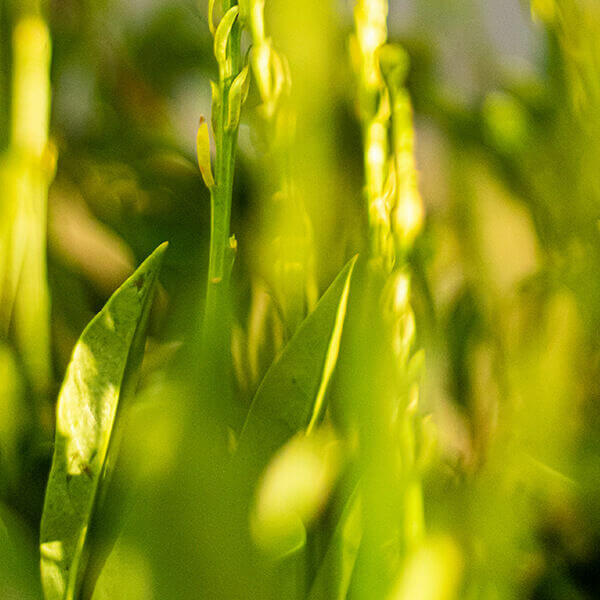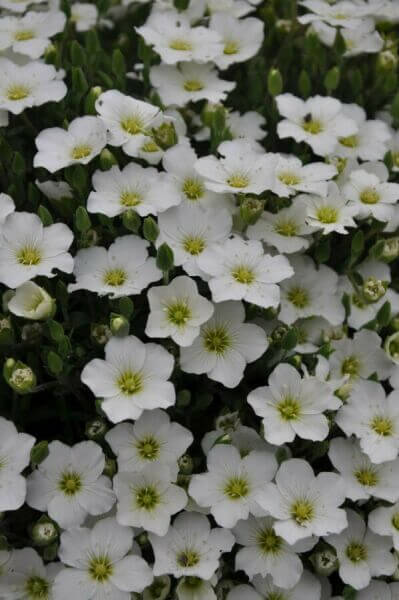Hedging Plants For Mediterranean Gardens
Hedging Plants For Mediterranean Gardens
Blog Article
Best Hedging Plants For Harsh Conditions
Improve your garden's appeal with lush hedge varieties such as Yew (Taxus), Thuja, Laurel, Photinia, and Bamboo, commemorated for their structural stability and environmental advantages.
Yew and Thuja offer evergreen protection and winter durability, while Laurel provides quick growth and broad, aromatic leaves.
Photinia adds seasonal appeal with its dynamic red foliage, and Bamboo provides a low-maintenance, serene ambiance.
These hedges enhance air quality, reduce noise, and develop tranquil, personal spaces.
Appropriate planting, spacing, and upkeep ensure vigorous development and environmental consistency.
Explore how these rich ranges can raise your garden's beauty and well-being.
Secret Takeaways
Change Your Garden With Lush Hedge Ranges
- Select Yew for its dense, evergreen growth and exceptional durability.
- Go with Laurel for its fast growth and broad leaves, guaranteeing fast personal privacy.
- Choose Photinia for its vibrant seasonal foliage, which turns a striking dark red.
- Utilize Bamboo for a low-maintenance, winter-hardy hedge with aesthetic appeal.
- Space plants 2-3 per meter and prune routinely for optimal growth and health.
Popular Hedge Plants
When transforming a garden with rich hedge varieties, it's vital to think about popular hedge plants such as Yew, Thuja, Laurel, and Photinia due to their special attributes and benefits.
Yew (Taxus) is highly esteemed for its durability and thick, green development, making it a prime option for sustaining landscapes.
Thuja is kept in mind for its evergreen foliage and robust winter season durability.
Photinia adds seasonal vibrancy with red leaves that darken over time, creating dynamic visual appeal.
Laurel provides fast development and fragrant, broad leaves, ideal for quick privacy.
Additionally, Bamboo is an excellent option for atmosphere, providing a low-maintenance, winter-hardy alternative that enhances the garden's visual with its classy, swaying walking canes.
These choices accommodate a range of horticultural requirements and choices.
Benefits of Garden Hedges
Garden hedges use a plethora of advantages, making them a valuable addition to any landscape. These natural barriers are affordable to implement and supply considerable wind protection, enhancing air circulation and adding to noise reduction. The thick foliage of hedges like Thuja and Beech guarantees privacy by blocking visibility, developing a tranquil and remote environment.
Hedges likewise play an important role in microclimate policy, providing a steady environment that fosters plant development and reduces temperature level changes. Their complex leaf structures filter pollutants, enhancing air quality and adding to a much healthier garden community.
Additionally, hedges excel in sound reduction, soaking up and deflecting sound waves to lower ambient sound levels. This dual performance of offering both visual and acoustic personal privacy enhances the general harmony and aesthetic appeal of any garden.
Planting and Upkeep Tips
For an effective hedge, precise preparation of the planting area is crucial. Guarantee the soil has correct pH and drainage to support strong root advancement.
Area the plants appropriately for the selected types. Water the hedge frequently during its preliminary growth phase, changing as required with seasonal changes.
Execute a organized bug control and disease prevention method, utilizing chemical or organic treatments when needed. Frequently inspect for aphids, mites, and fungal infections.
Apply mulch to keep wetness and reduce weeds. Seasonal pruning promotes thick growth and air circulation, important for plant health.
Following these standards will assist you cultivate a lively, well-maintained hedge that enhances the charm of your garden.
Spacing and Trimming Guidelines
Spacing and Trimming Guidelines
Appropriate spacing and cutting are important for cultivating healthy, aesthetically appealing hedges. Appropriate spacing guarantees each plant gets sufficient nutrients, light, and air flow.
Follow these guidelines for optimum hedge maintenance:
- Spacing: Position hedge plants 2-3 plants per meter to motivate robust growth.
- Pruning Strategies: Regular pruning is necessary for preserving wanted hedge height and shape. Trim brand-new growth in summer and cut down older wood during winter.
- Seasonal Care: Change trimming schedules and techniques according to seasonal requirements to ensure plant health.
- Hedge Height: Routinely monitor and trim to keep the desired hedge height and accomplish consistent aesthetics.
Complying with these steps will guarantee your hedge prospers, boosting both the appeal and functionality of your garden.
Selecting the Right Hedge
Picking the Right Hedge
Picking the suitable hedge includes evaluating factors such as mature height, foliage density, and ecological strength. Effective hedge plant selection requires understanding each types' development attributes and site-specific adaptability.
For example, Yew (Taxus) offers outstanding longevity and thick development, while Thuja is significant for its winter season strength. In addition, considering maintenance requirements is crucial; fast-growing species like Laurel or Privet demand regular trimming, whereas low-maintenance choices like Bamboo or Ivy may be more effective for those looking for very little maintenance.
Ecological elements such as soil type, light schedule, and wetness conditions must also direct the selection procedure. This mindful technique makes sure the picked hedges will prosper, offering both aesthetic and functional advantages to the garden landscape.
Shipment and Planting Recommendations
To guarantee your hedge plants grow, they need to be provided by specialized couriers and planted promptly upon arrival.
Follow these essential actions for effective planting:
- Soil Preparation: Enhance the soil with organic matter to improve drain and nutrient content.
- Planting Depth: Create a trench two times the width and equivalent to the depth of the root ball.
- Watering Techniques: Water thoroughly after planting, keeping the soil regularly damp but not filled.
- Mulching: Apply a layer of mulch to retain wetness and suppress weeds.
Consumer Support and Service
Given the important role of prompt support in horticultural pursuits, our customer assistance team is available 6 days a week through telephone, email, and social networks to offer skilled guidance and promptly attend to any concerns. Their dedication to fast reaction times guarantees customer fulfillment by resolving inquiries related to plant health, optimum planting techniques, and upkeep schedules.

Six days a week
This comprehensive assistance system, enhanced by an excellent 9.3/ 10 client score, highlights our commitment to boosting the gardening experience for every single customer.
Often Asked Questions
The Length Of Time Does It Consider Hedge Plants to Establish?
Hedge plants generally need one to three years to become totally established, with the exact period varying by species and growing conditions.
Reliable care during this critical duration is important for robust growth. Constant watering, vigilant weed control, and proper fertilizer application are critical in promoting strong root development.
For instance, fast-growing species like Laurel may develop more quickly, while slower-growing ranges such as Yew might take longer. Thorough maintenance speeds up the establishment procedure, resulting in healthy and dense hedges.
What Are the Finest Hedge Plants for Privacy?
The concern of the best hedge plants for personal privacy involves assessing evergreen and deciduous options.
Evergreen hedges like Thuja, Laurel, and Cypress offer year-round coverage, guaranteeing continuous privacy.
On the other hand, deciduous hedges such as Beech provide seasonal personal privacy, shedding leaves in colder months.
Key upkeep suggestions for personal privacy hedges consist of regular cutting, fertilizing in spring, and proper spacing-- usually 2 to 3 plants per meter.
In addition, consistent watering and persistent weed elimination are crucial for promoting healthy, thick development.
Can Hedge Plants Attract Wildlife to My Garden?
Yes, hedge read more plants can draw in wildlife to your garden by supplying essential benefits like shelter, food, and nesting websites, therefore enhancing local biodiversity. For example, yew, holly, and laurel are exceptional for attracting birds, while ivy supports a variety of bugs.
Nevertheless, it is necessary to keep in mind that there are some drawbacks, such as increased maintenance to manage insects and routine maintenance. Thoroughly picking and keeping hedge varieties can help balance these benefits and disadvantages, ultimately fostering a sustainable and dynamic community in your garden.
Exist Any Blooming Hedge Plants Available?
Yes, there are flowering hedge plants offered that can improve the charm of your garden.
For instance, Elaeagnus, likewise referred to as Olive Willow, produces aromatic white flowers in the fall, including a touch of beauty.
Photinia, another popular choice, showcases dynamic red leaves that mature into a rich green, producing a dynamic visual impact throughout the seasons.
To guarantee these plants flourish, it's necessary to practice proper pruning techniques and seasonal maintenance, such as cutting brand-new development in the summertime and cutting back in the winter.
These measures will assist preserve the health and aesthetic appeal of your flowering hedges.
How Do I Avoid Bugs in My Hedge Plants?
To avoid pests in hedge plants, employ natural bug control approaches and preserve proper hedge care. Present useful bugs like ladybugs, which prey on damaging insects, to create a balanced environment.
Routinely inspect your hedges for indications of invasion and promptly get rid of any affected parts to prevent the spread. Make sure the health of your hedges by applying well balanced fertilizers and offering adequate water.
Make use of mulching to retain soil wetness and appropriate spacing to reduce plant tension and promote robust growth. These practices jointly help in decreasing insect concerns and preserving a healthy hedge.
Conclusion
In essence, picking the best hedge ranges such as Yew, Thuja, and Laurel can transform any garden into a serene haven. These plants supply year-round greenery, improve aesthetic appeal, and offer useful benefits like sound reduction and wind security.
Correct planting methods, precise spacing, consistent watering, and seasonal trimming are essential for optimal development.
Dependable shipment services and skilled customer assistance make sure a seamless experience from purchase to planting, making it simpler than ever to raise your outdoor space.
Garden hedges provide a plethora of benefits, making them a valuable addition to any landscape. These natural barriers are cost-efficient to implement and offer considerable wind defense, enhancing air flow and contributing to noise decrease. The thick foliage of hedges like Thuja and Beech ensures privacy by blocking exposure, developing a tranquil and secluded environment.

Pruning Methods: Regular pruning is vital for preserving wanted hedge height and shape. Cut new development in summer and cut back older wood throughout winter.
Report this page